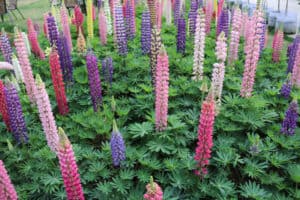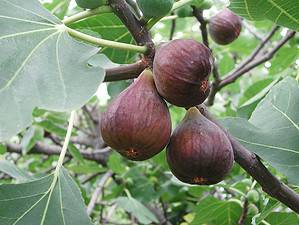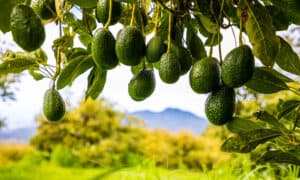Creeping plants that sprawl across the ground can take your garden display to the next level with minimal effort. Instead of using several plants to fill a space, creeping plants cover the ground and make your garden pop with just a few plants. Two of the most popular creepers are creeping thyme and blue star creeper. Which one is right for you? Here are the similarities and differences between these two creeping plants that can help you make the best decision for your situation.
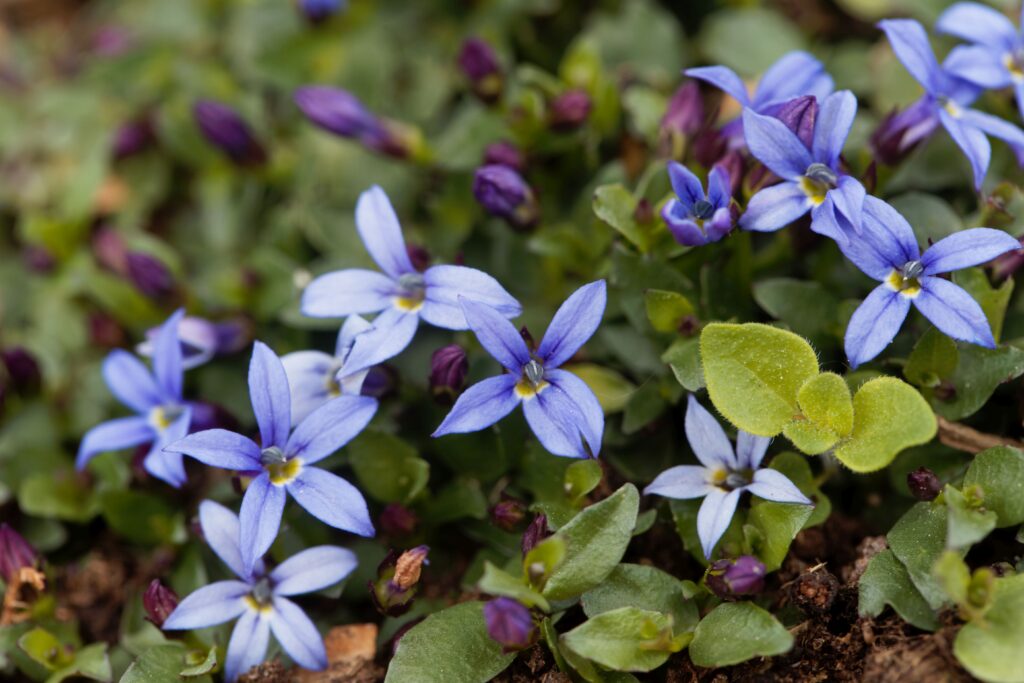
The blue star creeper forms a dense mat, making for lovely ground cover.
©iStock.com/weisschr
Blue Star Creeper vs. Creeping Thyme
| Blue Star Creeper | Creeping Thyme | |
|---|---|---|
| Common Name | Blue star creeper, swamp isotome | Creeping Thyme |
| Botanical Name | Isotoma fluviatilis | Thymus spp. |
| Plant Type | Herbaceous, perennial | Herbaceous, perennial |
| Mature Size | 2–3 inches tall, 1–2 feet wide | 2-6 inches tall, 6-18 inches wide |
| Sun | Full, partial | Full |
| Soil Type | Moist, well-draining | Well-drained, sandy |
| Bloom Time | Spring, summer | Summer |
| Flower Color | Blue, purple | Pink, white, purple |
| USDA Hardiness Zones | 6-8 | 2-10 |
| Toxicity | Toxic to people and pets | Non-Toxic |
While blue star creeper is a specific plant, creeping thyme is a general term used to describe several different plants. All of the plants below are commonly referred to as “creeping thyme,” although this is not an exhaustive list by any means.
Creeping Thyme Varieties
- Wooly thyme (Thymus pseudolanuginosus) – Zones 5-8
- Spicy orange creeping thyme (Thymus’ Spicy Orange’) – Zones 5-9
- White creeping thyme (Thymus paocos’ Albiflorus’) – Zones 2-9
- Creeping lemon thyme (Thymus x citriodorus) – Zones 5-10
- Snowdrift creeping thyme (Thymus serpyllum’ Snow Drift’) – Zones 5-8
- Caraway thyme (Thymus herba-barona) – Zones 5-9
- Red creeping thyme (Thymus serpyllum’ Coccineus’) – Zones 4-9
Consider Your Zone
It can be a bit confusing when one name is commonly used for several different plants, which is why it’s important to do some research. Knowing the specific creeping thyme variety matters, not only because of the different colored flowers but also because the plant hardiness zone recommendations differ.
By contrast, blue star creeper only refers to one specific plant. It has a rather tight growing window. The plant hardiness zones for the blue star creeper plant only range from Zone 6-8.
If you live in a colder zone, then a plant such as white creeping thyme would be a great choice. It is far more cold-hardy than blue star creeper, as well as the other creeping thymes.
If you don’t care to perennialize these plants and instead wish to grow them as annuals, then your options open up much more in colder zones. Virtually any of these creeping plants could thrive in your summer garden as annuals.
Conversely, if you live in a warmer climate, creeping lemon thyme is great up to Zone 10.
This is why it’s so important to research the specific plants that will thrive in your garden before making a purchase. If you choose a plant that is ill-suited for the hardiness zone in your locality, it’s highly unlikely the plant will succeed.
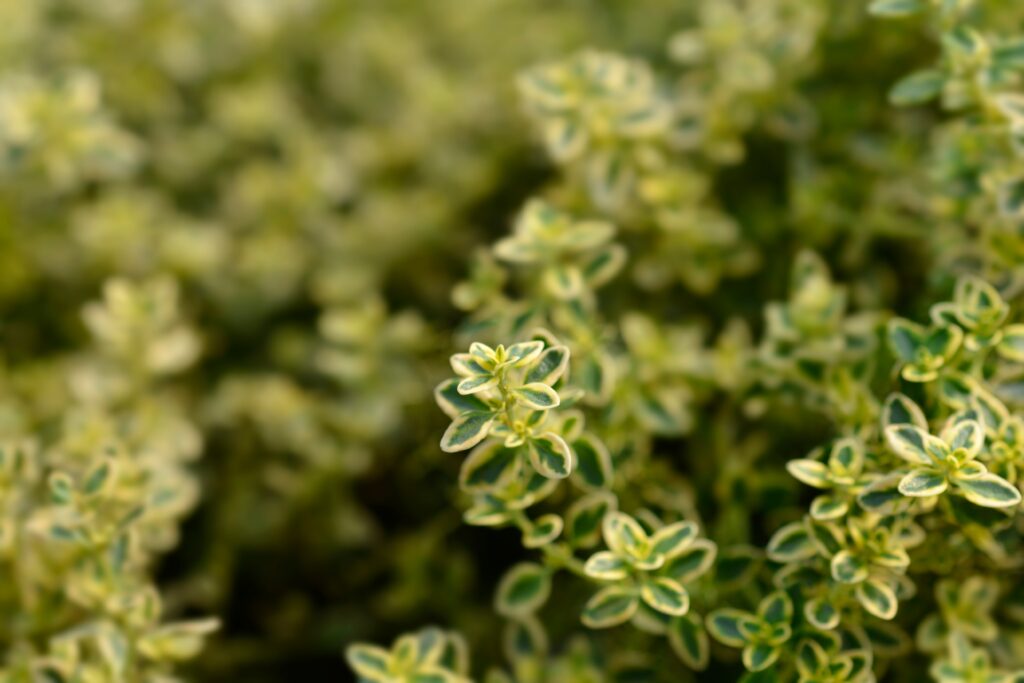
Creeping lemon thyme can perennialize up to Zone 10, making it perfect for warm-weather gardens.
©Nahhana/Shutterstock.com
Flowers and Plant Growth
As the name suggests, the blue star creeper features blue/light purple star-shaped flowers. The plant blooms in late spring and will hold its colorful flowers until the first frost of fall. Then, the plant spreads out to form a dense mat of green foliage, although the flowers are often so prolific in the summer that the foliage is barely visible.
It is sometimes used as a grass substitute in Zones 6-8. It holds up well to moderate foot traffic, and it only grows to three inches tall, so a lawn mower is never needed. The plant requires less water than a typical lawn and features moderate drought tolerance.
Creeping thyme plants are low-growing and feature a vine-like habit. The blue-green leaves spread out to cover the ground as the plant matures. The flowers will vary in color, depending on the type. When the plant matures, flowers will appear in late spring or early summer. When the blooming season ends, use a sharp pair of garden shears to cut away the spent blooms. This will help with air circulation and can prevent fungal problems.
Both the blue star creeper and creeping thyme plants can be good options to fill in gaps between flagstones, stepping stones, or pavers. They can be utilized in all sorts of scenarios where ground cover is desired.
In some cases, these plants may spread a bit too aggressively. Blue star creeper is known to grow well beyond its boundaries. Some types of creeping thyme, like caraway thyme, can do the same. To prevent these plants from exceeding their space, cut away any plants that are growing outside their borders. These plants’ proliferation is exactly what makes them highly desirable for ground cover, but it also means they will need to be intentionally contained to a certain space. Left unchecked, they can run wild.
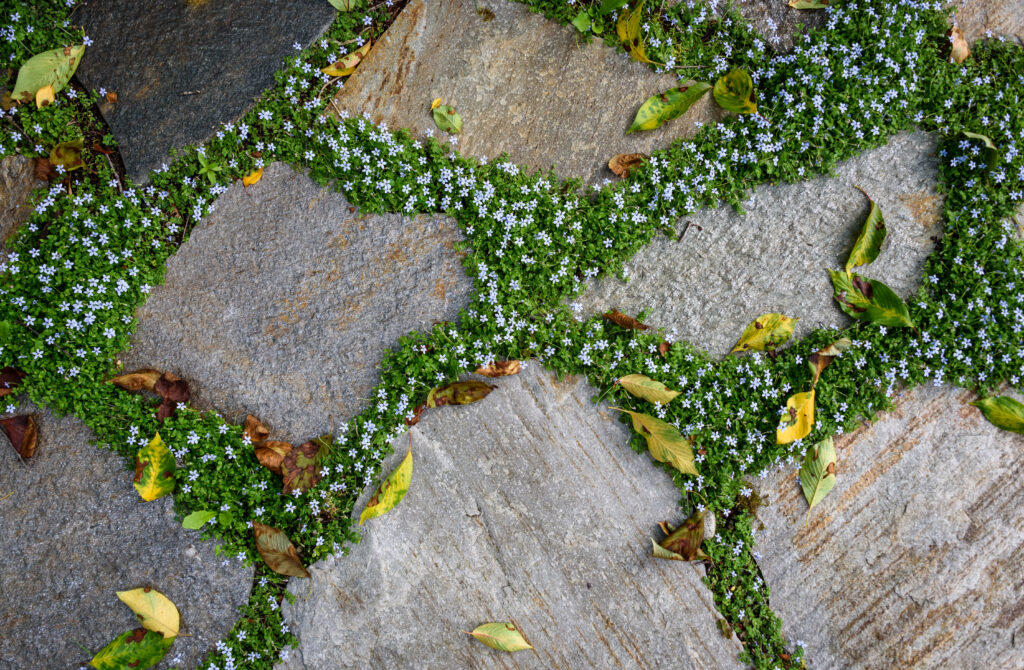
Blue star creeper is great ground cover between stones, as seen on this flagstone patio.
©knelson20/Shutterstock.com
Sun Exposure
Blue star creeper thrives in partial sun situations, especially in hot weather. The direct afternoon summer sun can stress the plant. A little afternoon shade will do wonders for this creeping plant.
Creeping thyme, on the other hand, is all about the sun. Plant it in a sun-drenched site where it can soak up the sun all day long.
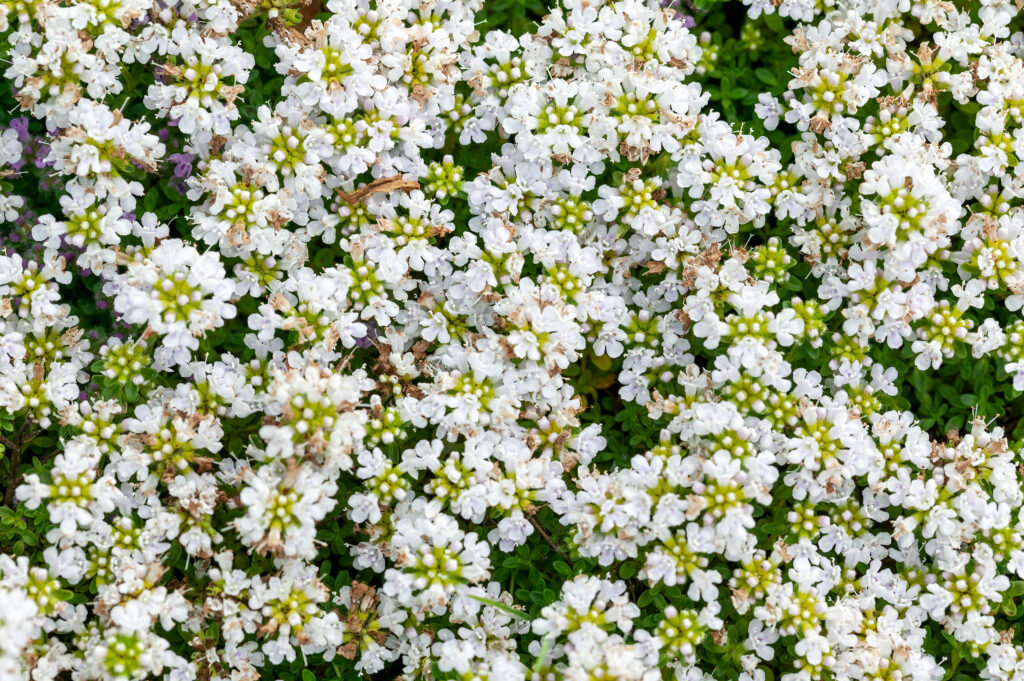
Snowdrift creeping thyme bursts with white blooms in the summer.
©Tony Baggett/Shutterstock.com
Soil
Blue star creeper does best in fairly well-draining soil but can handle almost any soil environment. As long as the soil isn’t waterlogged, this plant will be happy.
Creeping thyme, on the other hand, needs soil that drains exceptionally well well. It can thrive in sandy, rocky, and loamy soils. It will not fare well in wet clay, though.
Toxicity
All parts of the blue star creeper plant are toxic if ingested. Also, some gardeners have an allergic reaction when handling the plant. Wear gardening gloves when working with the blue star creeper, especially if you have sensitive skin.
Creeping thyme is non-toxic. It is part of the mint family. Many varieties can be used in cooking as it is closely related to the herb that is probably in your kitchen pantry right now.
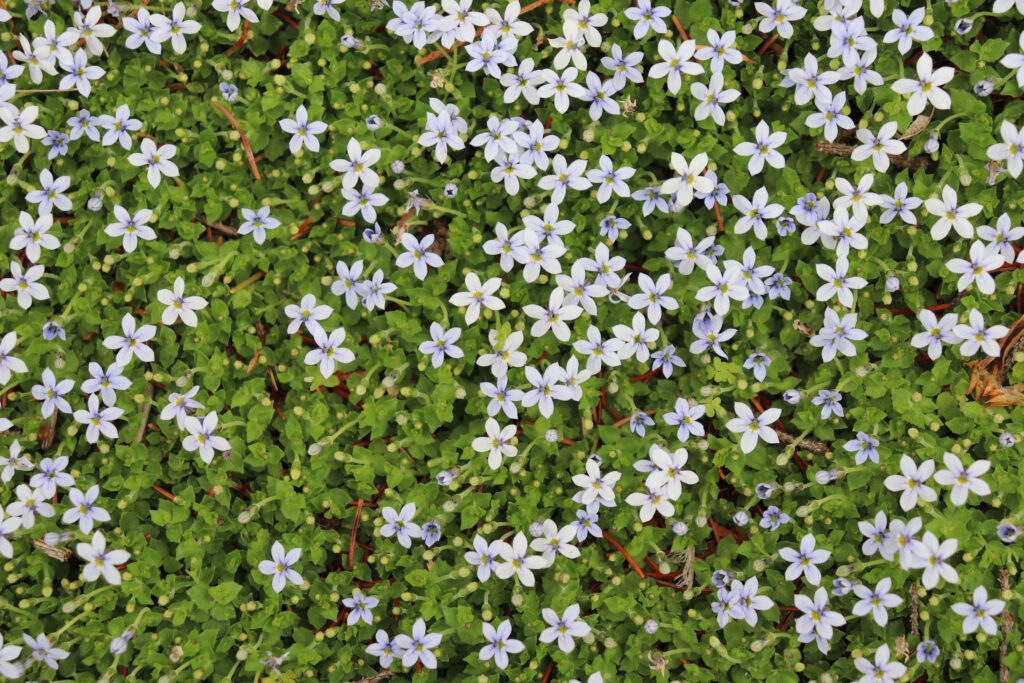
Blue star creepers feature plentiful small, light blue flowers from spring to fall.
©Mark R. Courtney/Shutterstock.com
Pests and Problems
Blue star creeper is generally not plagued with insect pests.
Creeping thyme, on the other hand, is a favorite of spider mites. Aphids can also be a problem if the plant is grown indoors. If these pests are present, you can spray them off with a garden hose. If that doesn’t work or if the infestation is more serious, insecticidal soap can be an effective and environmentally-friendly solution to rid the plant of these pests.
Blue star creeper plants can turn brown in the winter. There may be no cause for concern, especially if the grass in your region looks similar. Just like grass turns green after winter dormancy, so does the blue star creeper plant.
If the leaves of your creeping thyme turn yellow or brown, that could be an indication that the soil isn’t draining properly. Quick action is needed to prevent fatal root rot. Stop watering and see if the soil remains soggy. If so, the plants may need to be dug up and replanted in faster-draining soil.
Creeping thyme can also get a big leggy as it ages. After the first frost in the fall, prune the plant back to encourage new growth in the spring.
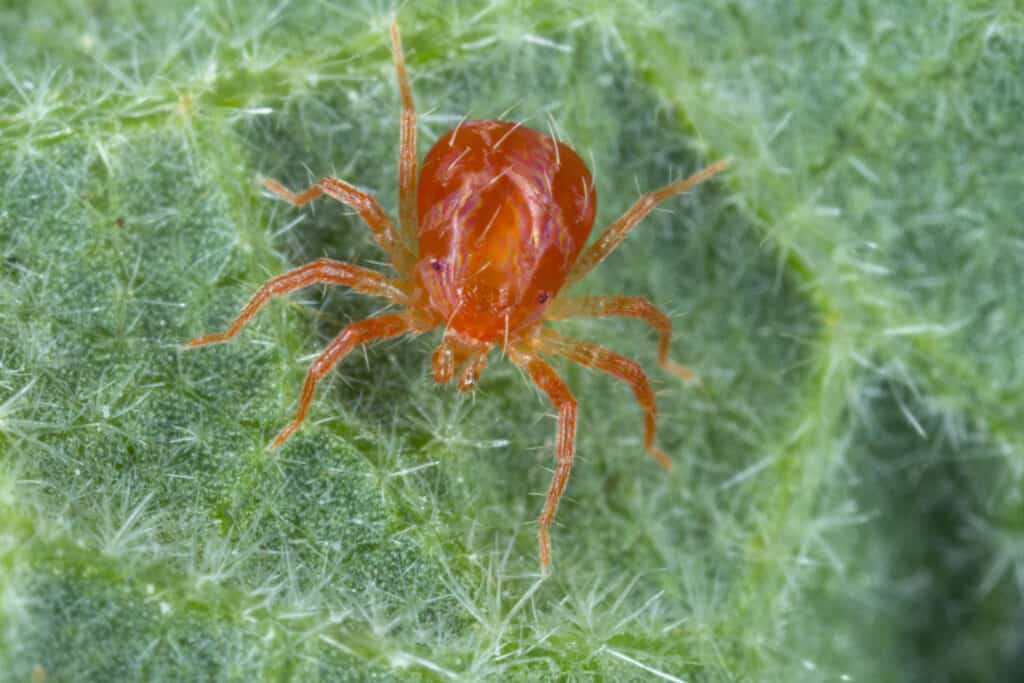
Spider mites are common pests on creeping thyme plants.
©Tomasz Klejdsz/Shutterstock.com
The photo featured at the top of this post is © knelson20/Shutterstock.com
Thank you for reading! Have some feedback for us? Contact the AZ Animals editorial team.



